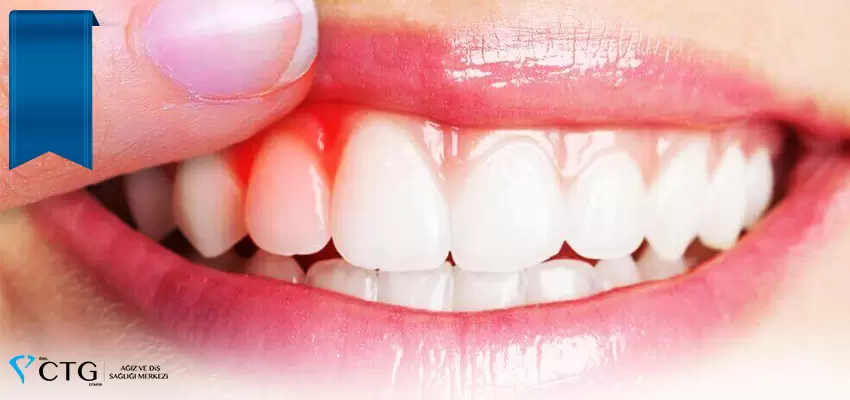


Bleeding Gum is the most important indicator of gum imflammation. It is a pretty common situation. It can be a simple imflammation issue but it can also indicate a systematic problem.
Bleeding of the gum area is the most important symptom of gum infections. It is pretty common. It can also be because of a systematic condition. This symptom almost immediately gets noticed by the patient and is one of the most common reasons patients visit dentists.
This symptom should not be postponed and should be consulted with a dentist.
Healthy Gum color is light pink (rose like). Healthy Gum has a tight form and envelopes the teeth tightly. Reddish, swollen and shiny shapes are not healthy. Soft dental brushing should not lead to gum bleeding.
It mainly occurs after dental brushing. Dental brushing and flossing should be painfree. Traumatic brushing can make healthy gum bleed, for this reason dental brushing must be done softly, too much pressure is not good. If there is dental bleeding, patients will also have a foul metallic taste in their mouth and bad breath commonly occurs with it.
Generally it is because of an unhygienic mouth. In time, bacteria in the mouth leads to plaque on our teeth. These plaque leads to gum infections which is defined as Gingivitis. These plaques can be carved/cleaned from the teeth by brushing and dental flossing everyday in a healthy matter. If the plaques have formed densely and alot in time which can happen because the minerals in the saliva can get trapped in the plaque and make the plaque harder, then the patient may need dentist care.
Prosthesis’ which are not in harmony with the other teeth creates unhygienic conditions in the mouth and this also adds up to the bad conditions of Gingivitis.
Breathing through mouth while sleeping leads to dryness of the mouth. This also adds up to the bad conditions of Gingivitis because saliva is a natural antibacterial.
Illnesses that changes the amount of blood in the body, hormonal changes in pregnancy, Locemia and Vitamin C deficit also leads to gum bleeding.
It is the beginning stage of gum diseases. The cause is dental plaques. At this stage, gum looks swollen and reddish. Generally it doesn’t hurt. If treated at this stage, gum health returns back to normal. If left untreated, this develops into Periodontitis which means recession of the gum and the start of bone loss in the jaw. Treatment for gingivitis is maintaining better health of your teeth and gum, and removal of the plaque from teeth. Gingivitis can go away as fast as in one week.
Periodontitis is a disease which affects the tissues around the teeth. It is the next stage of Gingivitis. The tissues around the teeth are gum, jaw bone, cement like tissues around the tooth root and periodontal ligaments which bonds the teeth to the jaw bone. Massive amounts of dental plaque, gum recession, bone loss and sometimes even moving teeth are present with Periodontitis.
Periodontitis may be aggressive or chronic. Aggressive periodontitis is seen in 15% of the people with periodontitis and generally affects people below 30 years old which progresses very fast. Genetic inclination is a factor. The more common form of periodontitis is chronic periodontitis and develops slowly. Bad oral hygiene, usage of tobacco, and uncontrolled systemic diseases like diabetes increases the risk of periodontitis.
First of all, oral hygiene must be well and dental plaques must be removed. Patients must visit dentists at least once every 2 years and get checked for early symptoms.
If periodontitis is present, extensive cleaning of the mouth and root fixation must be done by a dentist. An ultrasonic device, hand tools or sometimes laser devices are used to clean the plaques.
If the gum recession is more than a certain amount and the above treatments don’t make the situation better, dental flap operation must be done.
Dental plaques contain massive amounts of bacteria. These bacteria affects the surrounding tissues and rots them over time. They also make the diseases progress faster.
If left untreated these cause gingivitis then periodontitis.